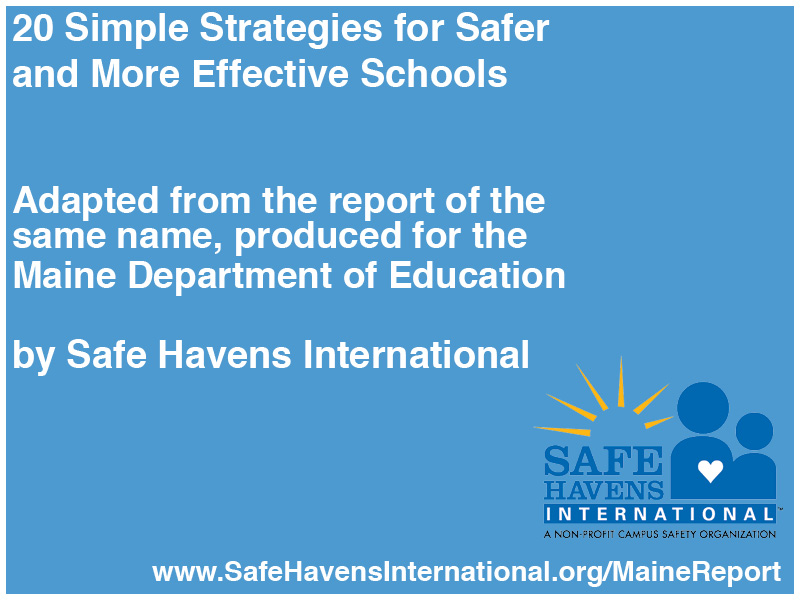Our video crew did an outstanding job in developing a companion infographic for the Twenty Strategies to Safer and More Effective Schools that was released by the Department last week. Our public information intern is working on another infographic based on a new paper Relative Risks of Death in U.S. Schools written by Steve Satterly.
|
Click here to download the full report created for the Maine Department of Education (1.5MB)
|
 |